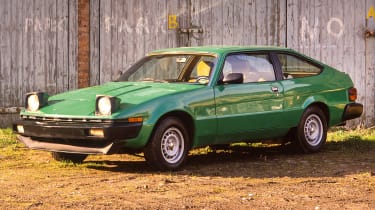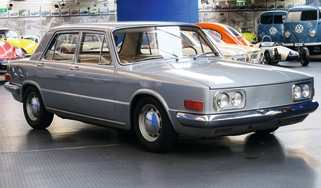Triumph Lynx – Dead on arrival
With a 3.5-litre Rover V8 under the bonnet and TR7 fastback styling, the Lynx could have been British Leyland’s answer to the Ford Capri

This could have been a British Capri killer. It could have vanquished its German-made rival with modernity, sophistication and something no Euro Capri could offer: a thumping great V8. Instead, it was felled by the mix of poor planning, questionable design, and industrial unrest that came to define Britain’s national car maker in the ’70s.
Plans for a four-seat Triumph coupe had been pitched without success since the 1960s under the codename Lynx. In 1971 the project was started again and paired with the upcoming TR7, BL’s ‘corporate sports car’ intended to replace the TR6 and eventually, with some restyling, the MGB. The Lynx would be its longer-wheelbase brother, stepping in for the troubled Triumph Stag, taking the fight to the Capri in Europe and providing a logical range mate to the TR7/8 in the US. It would run the 3.5-litre Rover V8 to give it a Stag-style rumble, and eventually there would be a four-cylinder model to supersede the MGB GT.
Compared to the bonkers logic that underpinned much of Leyland product planning at the time, this was all very sensible. Plus, the new model would take up some of the spare capacity in Triumph’s Speke factory on Merseyside, a need that became more urgent soon after TR7’s launch in 1975 when it became clear that its avant-garde design and underwhelming launch spec had poisoned sales projections. In 1977, however, new British Leyland boss Michael Edwardes whipped up an accelerated plan to save BL from ruin, part of which was to tackle excess production capacity. The underused Speke facility was a prime example of the problem and its staff didn’t help their cause by going on strike the very day Edwardes assumed office. In February 1978 he announced that the plant would close and production of the underperforming TR7 shifted to Coventry where, it seemed, there was no capacity to make the Lynx as well.
> Lamborghini Canto – Dead on arrival
It’s sometimes claimed that the drastic action at Speke killed this car, but in truth the project didn’t stop when they closed the TR7’s Merseyside home. Indeed the green Lynx that still lives in the British Motor Museum, sole survivor of 18 prototypes, was registered several months after the Speke line stopped. When the Lynx finally died it wasn’t because it couldn’t be made – BL still had plenty of factory space and the tooling had already been ordered – but because there was no appetite for it.
Technically, it sounded promising, what with its V8 and a chassis that had Capri-shaming potential in its marriage of TR7 front end and coil-sprung Rover SD1 rear. But the styling was a curious mess, mixing the nose of the TR7 with a fastback body blighted by huge bumpers, oversized tail lights and the dead hand of committee thinking. There was a good-looking car trying to get out, but it wasn’t having much success. Worst of all was a ride height so tippy-toed that when the American importers showed a prototype at US customer clinics they stuck concrete blocks in the boot to try to make it sit better, and still the feedback was dismal.
This, along with a shortage of cash, sealed the Lynx’s fate. The TR7 was already faltering because it wasn’t pretty enough, and the last thing BL needed was another hard-to-sell sports car. An alternative scheme to put the gorgeous Triumph Stag back into production running the Rover V8 was swiftly scuppered when it was discovered that some tooling had already been scrapped, and in the end BL decided it could enter the ’80s without a four-seater sports car at all. By 1979 the V8-powered Capri killer was dead.






